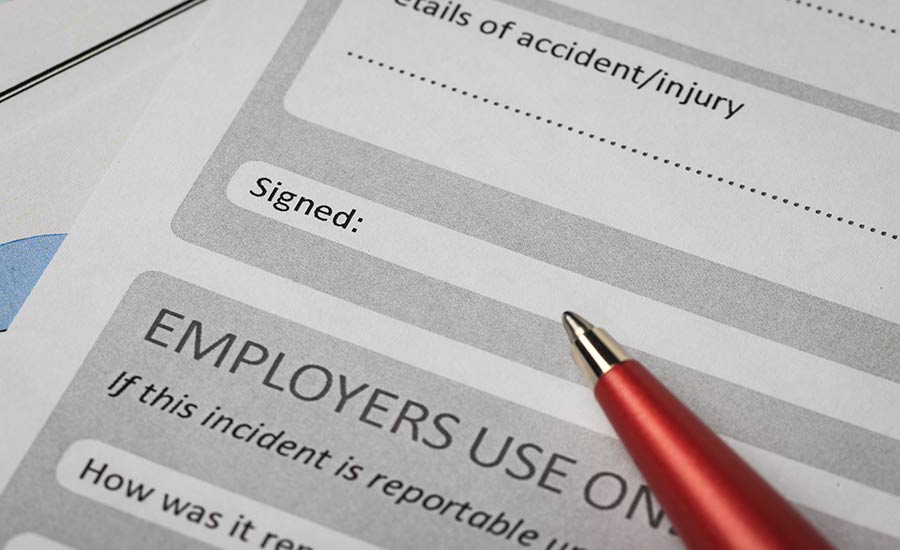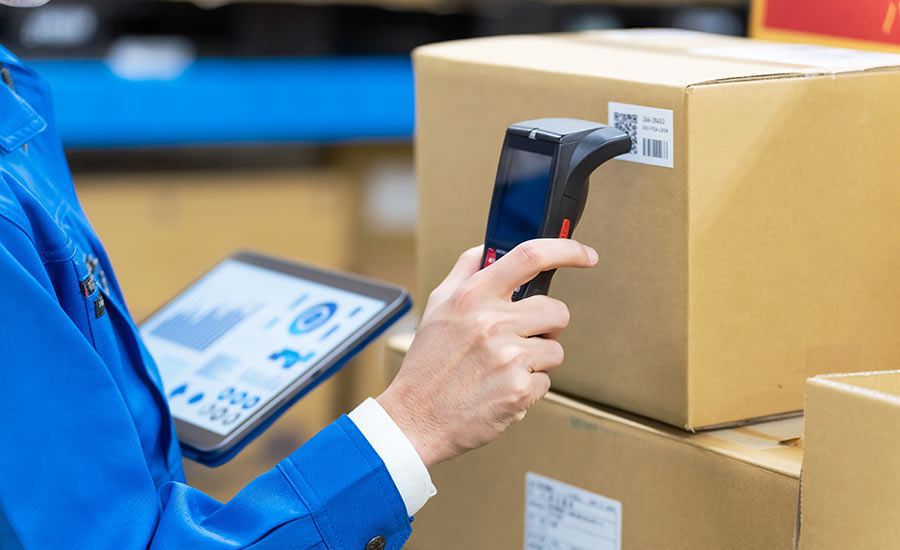
Incident reports are key when it comes to maintaining a safe workplace, as they can pinpoint hazards and help you develop proactive solutions to prevent similar events from occurring in the future.
In this article, we’ll share the most common types of incidents that occur in the workplace, along with what type of incident report to file for each.
Plus, we’ll explain how to organize the entire reporting process by going the paperless route, so your employees and managers can create, save and send digital reports in real time.
Table of Contents
Organize your incident reports.
Try doForms for free!
What Is An Incident Report?
An incident report is a document that contains details about an unexpected event that occurred within your company, that led or could lead to injury or harm to your employees, property or equipment.
It allows you to provide an accurate and detailed description of what happened, why or how the incident occurred and what actions were taken to address the issue.
Who Should Fill Out An Incident Report?
An incident report can be completed by a manager or the employee involved in the incident.
When Should An Incident Report Be Completed?
A good rule of thumb for completing an incident report is to fill it out right away, on the same day it occurred. This allows your employees and managers to accurately recall the details of the incident.
 Incident reports can be filled out by your safety manager or employee
Incident reports can be filled out by your safety manager or employee
8 Types Of Incidents
From near hits to lost time accidents, here are the most common types of incidents that occur in the workplace and require a report.
1. Near Miss
A near miss, or a near hit, is an unexpected incident that almost resulted in an employee injury or damaged property.
Some of the most common causes of a near miss include faulty equipment and human error or unsafe behavior.
To prevent near misses, provide workplace safety training for your employees. If your employees are working in a construction or warehouse facility, require them to wear personal protective equipment (PPE).
2. Unsafe Acts
Unsafe acts are employee behaviors that ignore or violate company policies and workplace safety procedures that can result in accidents, injuries or property damage.
Some examples of unsafe acts in the workplace include engaging in horseplay, failing to wear personal protective equipment (PPE) and ignoring warning signs.
To help prevent unsafe acts, it’s important to implement workplace guidelines to outline safe and professional employee conduct.
3. Workplace Hazards
Hazards in the workplace are any conditions or factors that can potentially cause harm to your employees, property or visitors.
Hazards can be grouped into different types: physical, chemical and biological hazards.
To prevent workplace hazards, ensure all signs are clear and visible, and label all chemical containers.
4. Minor Injury
A minor injury is an unexpected event that is typically not life-threatening and only requires first-aid care.
Examples of minor injuries in the workplace include cuts, scrapes, bumps, bruises and strains.
To prevent minor injuries in the workplace, implement proper lighting, ensure employees are following safety guidelines, and keep walkways clear.
5. Lost Time Accident
A lost time accident is an unexpected event that results in your employee missing work for a period of time.
Lost time accidents can be caused by falls, getting struck by faulty equipment or being exposed to harmful substances.
Lost time accidents can have a significant impact on both you and your employee. For your employee, this type of accident can result in lost wages, medical expenses and reduced quality of life.
On the other hand, lost time accidents can result in decreased productivity, increased workers’ compensation costs and potential legal liability for your company.
To help prevent lost time accidents, encourage your employees to attend equipment maintenance and training classes, and ensure that all employees are following safety protocols.
6. Security Incident
A security incident is a situation that poses a threat to the security of your employee, company or system.
Security incidents can include theft, harassment, cyber attacks or other criminal activity that can threaten the safety and security of your employees and property.
To prevent security incidents, install security cameras, lock up high-value inventory and conduct cyber security training with your employees.
7. Fire Incident
A fire incident in the workplace is an unexpected event that involves fire, that may result in injured employees and damaged property.
These incidents can be caused by overloaded sockets, faulty equipment, smoking or chemical reactions.
To help prevent fire incidents, implement designated smoking areas and ensure that your fire protection equipment (like fire extinguishers) is easily accessible.
8. Fatalities
Fatalities are workplace incidents that result in the death of your employee.
In most cases, fatalities can be prevented through workplace safety training, identifying and mitigating hazards and utilizing the right personal protective equipment.
To help prevent fatalities, promptly resolve issues recorded in near miss reports and offer employee safety training and education courses.
 An incident report can help you prevent accidents and other fatal events in your workplace
An incident report can help you prevent accidents and other fatal events in your workplace
Types Of Incident Reports
The most common types of incident reports include:
1. Near Miss Report
A near miss report is a document that describes an unexpected event that almost injured your employee while on the job, or almost damaged your property.
This type of report can help you identify faulty equipment and determine workplace processes or behavior that need to be addressed, which in turn, can help prevent accidents from occurring.
2. Accident Report
An accident report is a formal document that describes an unexpected event that resulted in an injury. This type of report provides insights into what happened, and can be referred to later on if the employee requires time off work or needs to claim compensation.
As an employer, accident reports can also help you provide a solution to ensure similar injuries do not happen again.
3. Hazard Report
A hazard report is a document that discloses potential hazards or unsafe conditions in the workplace, such as mold growing on carpets.
4. Security Incident Report
A security incident report is a document that discloses a security-related incident (a phishing attack, for example) that occurred within your company.
This type of report allows you to identify security trends or patterns, so you can develop strategies such as training employees to identify a phishing email.
5. Fire Incident Report
A fire incident report is a document that describes a fire-related incident that occurred within your building.
This type of report can help you identify and adjust factors that contributed to the incident, such as loose wiring, overloaded sockets or faulty equipment.
6. Injury and Lost Time Incident Report
An injury and lost time incident report is a document that discloses an incident that resulted in an employee missing work due to an injury or disability.
Your employees can utilize injury and lost time reports to claim workers’ compensation.
7. Exposure Incident Report
An exposure incident report is a document that describes an event that exposed your employees to potentially infectious diseases or harmful substances in the workplace.
8. Sentinel Event Report
A sentinel event report is a document that discloses an unexpected event that results in the death of an employee, or serious temporary or permanent injury (physical or psychological) of an employee.
Create a custom digital incident report.
Try doForms for free!
How To File An Incident Report: What To Include
From the specific date and time when the incident happened to photos and videos as supporting evidence, here’s what your incident report should include:
- Date and Time: Take note of the specific date and time of the incident
- Location: Detail the location of the incident, including any specific areas, departments or equipment involved
- Description: Write a detailed description of the incident, including what happened and how the incident occurred
- People Involved: Record the names and contact information of the people involved in the incident, from the victims to witnesses
- Injuries or Damage: Take note of any injuries or equipment damages that resulted from the incident, including the severity of the injuries and the extent of the damage
- Contributing Factors: Record any contributing factors that led to the incident, such as unsafe conditions or equipment
- Actions Taken: Write down the actions taken in response to the incident, such as first-aid treatment, notifying supervisors or authorities, and equipment repair
- Recommendations: Include suggestions to improve safety or prevent similar incidents from occurring in the future
- Signatures: Gather signatures from the people involved to confirm that everyone agrees with what has been recorded
- Photos and videos: Include supporting evidence such as photos and videos of the incident, such as images of faulty wiring or CCTV footage of faulty equipment falling on an employee
Build a digital incident report.
Try doForms for free!
Why Is Incident Reporting Important?
According to a recent report by the United States Bureau of Labor Statistics, there were over 1 million illnesses and non-fatal injuries in the workplace in 2020 that caused an employee to miss at least one working day.
Reporting incidents can help you identify dangerous workplace behaviors, faulty equipment and processes that need to be reassessed for safety. This will also allow you to proactively find solutions to protect your employees and reduce the risk of accidents and fatalities.
Organize Your Incident Reports with doForms
Incident reports are a crucial part of maintaining a safe workplace. They can help you identify and fix issues that pose a threat to your employees, before they snowball into more serious, fatal accidents.
This type of report needs to be recorded immediately, submitted to the proper teams and followed up on. However, reports written on paper can be costly, messy and time-consuming. That’s where doForms come in.
As a mobile forms software solution, doForms helps you record data in real time, capture images and videos needed for evidence, and store reports safely in a centralized location.
With doForms, you can:
- Choose from our template library or create your own custom form
- Create and fill out digital reports using your tablet, smart phone or other device
- Access your secure digital documents from any location
- Create daily task sheets and log hazards
- Build equipment maintenance reports, preventive maintenance checklists and work order management guides
- Create safety inspection and safety audit checklists
- Manage work schedules, employee payroll and performance reviews
- Conveniently modify, submit and store your reports in one secure location for easy access
- Quickly access your reports using the doForms mobile app
- Prevent the exposure of sensitive details, such as employee information, with HIPAA-compliancy security features including multi-factor authentication, PIN-based logins, form field encryption and more




